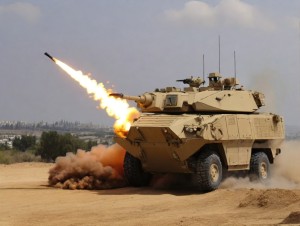In a groundbreaking stride towards refining the efficacy of smartphone-based COVID-19 diagnosis, a recent study published in Scientific Reports delves into the intricacies of AI-aided Diagnosis of X-ray images through messaging Applications (AIDXA). With the ever-increasing reliance on AI models for medical diagnostics, researchers unravel the limitations that have lurked in the shadows, particularly when analyzing highly compressed X-ray images shared via smartphone applications.
Limitations unveiled
In their quest to scrutinize the current landscape of AI-based COVID-19 diagnosis, the researchers present a comprehensive case study highlighting two pivotal limitations of AIDXA systems—Prediction Instability (PIP) and Out of Lung Saliency (OLS). The study underscores the critical impact of these limitations on the reliability of AI models in identifying COVID-19 through smartphone-transmitted X-ray images.
The investigators present a groundbreaking addition to the scholarly landscape in the form of a pioneering dataset, denoted as ‘WhatsApp CXR’ (WaCXR). This meticulously curated dataset is expressly designed to scrutinize and assess the impact of image compression on the performance of AIDXA models. With a voluminous compilation exceeding 6,500 instances, encompassing both compressed and uncompressed chest X-ray (CXR) images, this dataset serves as the experimental terrain for laying bare the susceptibilities inherent in current AI models.
The revelations emanating from the study bring to light the inherent fragility in predictive outcomes, wherein a singular model may proffer conflicting diagnostic results contingent upon the compression status of the X-ray image under consideration. This nuanced exploration underscores the intricate interplay between image compression and the stability of AI diagnostic predictions, thereby contributing significantly to the ongoing discourse surrounding the refinement and fortification of artificial intelligence in medical imaging.
To quantify these issues, the researchers introduce ‘PI Score’ and ‘OLS Score’ as metrics, shedding light on the degree of instability and saliency present in state-of-the-art AIDXA models. These metrics provide a quantitative foundation for understanding the limitations that hinder the seamless application of AI in the realm of COVID-19 diagnosis.
COVIDMT is a game-changing AI model
In response to the identified challenges, the researchers unveil a game-changing solution—COVIDMT. This novel multi-task learning (MTL) model is meticulously designed to overcome the shortcomings of existing AIDXA models, particularly addressing PIP and OLS.
COVIDMT, constructed on a state-of-the-art Deep Learning Network, ushers in a new era of reliability in COVID-19 diagnosis. Leveraging transfer learning through Imagenet weights, the model exhibits a 40% improvement in PI score and a 35% enhancement in OLS score compared to its counterparts like ResNet-50 and ResNeXt-50.
This investigation delves deeply into the extensively utilized AIDXA systems, specifically examining the notable deep neural networks such as ResNet-50, ResNeXt-50, VGG-19, XceptionNet, and the distinctive COVID-Net. Notably, COVID-Net takes a prominent position in the spotlight, given its utilization of the identical training dataset as COVIDMT, thereby facilitating a direct and meaningful comparative analysis.
The outcomes of the comprehensive evaluation highlight the resilience of COVIDMT, signaling a noteworthy advancement in both stability and saliency when juxtaposed with the prevailing AI COVID-19 diagnostic models of the current era. These findings subtly allude to the promising potential inherent in Multi-Task Learning (MTL) frameworks, presenting an intriguing and fertile pathway for subsequent exploration and enhancement within the realm of medical diagnostics.
The future of AI in smartphone COVID-19 diagnosis
As the horizon of AI-driven medical diagnostics expands, the study leaves us pondering the future challenges and possibilities. Can multi-task learning frameworks, exemplified by COVIDMT, be the linchpin in fortifying AI models against instability and saliency? The quest for reliable and accurate COVID-19 diagnosis via smartphones takes center stage, urging researchers and practitioners alike to explore innovative pathways and refine the synergy between artificial intelligence and medical imaging.




